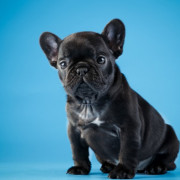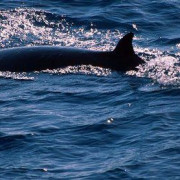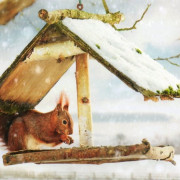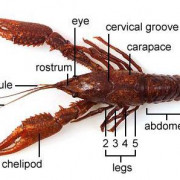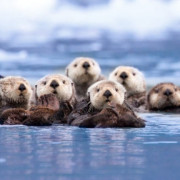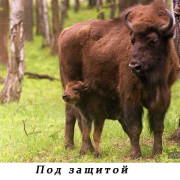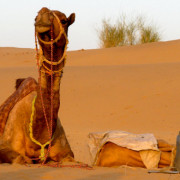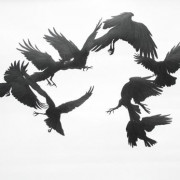Топ 18 Гибридные животные, в существование которых трудно поверить
Содержание:
Historical and notable zebroids
Zebra-horse hybrid foal with quagga-like markings, Walter Rothschild Zoological Museum, Tring, England
In 1815, Lord Morton mated a quagga stallion to a chestnut Arabian mare. The result was a female hybrid which resembled both parents. This provoked the interest of Cossar Ewart, Professor of Natural History at Edinburgh (1882–1927) and a keen geneticist. Ewart crossed a zebra stallion with pony mares to investigate the theory of telegony, or paternal impression. In Origin of Species (1859), Charles Darwin mentioned four coloured drawings of hybrids between the ass and zebra. He also wrote
In his book The Variation of Animals and Plants under Domestication, Darwin described a hybrid ass-zebra specimen in the British Museum as being dappled on its flanks. He also mentioned a «triple hybrid, from a bay mare, by a hybrid from a male ass and female zebra» displayed at London Zoo. This would have required the zebroid sire to be fertile.
During the South African War, the Boers crossed Chapman’s zebras with a ponies, to produce animals for transport work, chiefly for hauling guns. A specimen was captured by British forces and presented to King Edward VII by Lord Kitchener, and was photographed by W. S. Berridge. Zebras are resistant to sleeping sickness, whereas purebred horses and ponies are not, and zebra mules hopefully would inherit this resistance.
Grevy’s zebra has been crossed with the Somali wild ass in the early 20th century. Zorses were bred by the US government and reported in Genetics in Relation to Agriculture by E. B. Babcock and R. E. Clausen (early 20th century), in an attempt to investigate inheritance and telegony. The experiments were also reported in The Science of Life by H G Wells, J Huxley, and G P Wells (around 1929).
Interest in zebra crosses continued in the 1970s. In 1973, a cross between a zebra and a donkey was foaled at the Jerusalem Zoo. They called it a «hamzab». In the 1970s, the Colchester Zoo in England bred zedonks, at first by accident and later to create a disease-resistant riding and draft animal. The experiment was discontinued when zoos became more conservation-minded. A number of hybrids were kept at the zoo after this; the last died in 2009. One adult still remains at the tourist attraction of Groombridge Place near Tunbridge Wells in Kent.
21st century
Today, various zebroids are bred as riding and draft animals, and as curiosities in circuses and smaller zoos. Zorses are bred in Africa and used for trekking on Mount Kenya;[deprecated source] the zebra parent gives resistance to the nagana pest disease. A zorse (more accurately a zony) was born at Eden Ostrich World, Cumbria, England, in 2001, after a zebra was left in a field with a Shetland pony. It was referred to as a Zetland. Usually, a zebra stallion is paired with a horse mare or donkey mare, but in 2005, a Burchell’s zebra named Allison produced a zonkey called Alex sired by a donkey at Highland Plantation in the parish of Saint Thomas, Barbados. Alex, born 21 April 2005, is apparently the first zonkey in Barbados. In 2007, a stallion, Ulysses, and a zebra mare, Eclipse, produced a hebra named Eclyse, displaying an unusually patchy color coating. The Wild Animal Safari in Springfield, Missouri, and its sister location in Pine Mountain, Georgia, have several zonkeys as of 31 March 2010.[citation needed] In July 2010, a zonkey was born at the Chestatee Wildlife Preserve in Dahlonega, Georgia. Another zebra–donkey hybrid, like the Barbados zonkey sired by a donkey, was born 3 July 2011 in Haicang Safari Park, Haicang, Xiamen, China. A zonkey, Ippo, was born 21 July 2013 in an animal reserve, in Florence, Italy. Khumba, the offspring of a zebra dam and a dwarf donkey sire, was born on 21 April 2014 in the zoo of Reynosa in the state of Tamaulipas, Mexico. More recently, in November 2018 at a farm in Somerset, a cross between a donkey stallion and a zebra mare was born. The male foal was described as a zonkey by its owner and has been named Zippy.
Genetics
Donkeys and wild equids have different numbers of chromosomes. A donkey has 62 chromosomes; the zebra has between 32 and 46 (depending on the species). In spite of this difference, viable hybrids are possible, provided the gene combination in the hybrid allows for embryonic development to birth. A hybrid has a number of chromosomes somewhere in between. The chromosome difference makes female hybrids poorly fertile and male hybrids generally sterile, due to a phenomenon called Haldane’s rule. The difference in chromosome number is most likely due to horses having two longer chromosomes that contain similar gene content to four zebra chromosomes. Horses have 64 chromosomes, while most zebroids end up with 54 chromosomes.
Programs list of features
| Import of the content | Import of the content from the files of different formats (HTML, XML, XLS, SQL,TXT) to program | ||
| RSS Import | Import of the content out of RSS feed. Full version parsing is available. | ||
| Export of the project | Export of the project to more than 50 CMS and services. The full list is available on this page: List of CMS | ||
| XML-RPC ( remote posting) | Posting over the XML-RPC protocol. The Program us able to post to one or several blogs. You should even not enter the website. | ||
| Search and Replace | Replacement the content for the whole project. You can create the required set of replacement rules and activate them with a few clicks whenever you want. | ||
| Bulk insert of code | An insert of the required code to the pointed place to all parts of projects. | ||
| Selection of tags | Search and setting of relevant tags for each article. Both, automatic and semi-automatic modes are presented. | ||
| Deleting of headings and articles | Automatic deleting of headings and irrelevant articles. | ||
| Duplicates deleting | Search and deleting of duplicate articles by using the shingle method. The program compares thousands of articles with each other in several minutes. | ||
| Postponed publication | The powerful tool that helps to parcel by dates and let you to publish posts with the required intensity. | ||
| The mass picture posting | Helps to add pictures into texts from the indicated by the user folder or an automatic search on relevant search queries. | ||
| Pictures Uploading | Pictures uploading to the chosen by user picture hosting or to the own server via FTP. | ||
| Pictures Downloading | Downloading pictures, linked to the texts, to the project folder. Is required for picture storage on their own servers. | ||
| PHP plugin support | Support of program plugins created at PHP platform. It gives us an opportunity to widen program’s option. The set of dozens prepared plugins is available as well. | ||
| Macros of actions | Ability to create your own scenario to handle projects by program and initiate them in a couple of clicks. | ||
| Google translate | Translating of texts by using all Google translate options. | ||
| To make all pictures unique | The tool for processing pictures, that helps to make them more unique for search engines. | ||
| Article division | Article division to several separate by using the chosen set of rules. | ||
| Distribution over categories | An automatic distribution of posts over categories. | ||
| Video parser | Search and integration into articles of themed video. A number of popular video services is supported. | ||
| CMS installer | An automate installation of some popular CMS to your server without the need for manual intervention in the process. | ||
| Sinonymizer | The inbuilt text synonymizer. It works very fast. The quality of synonymizing depends directly on the used vocabularies. | ||
| Proxy Support | Proxy support by all the required tools. The program can check if they are active. | ||
| Outlining key words | Selection of keywords and their allocation with tags strong, em, b, i. | ||
| An automatic relink | Internal and external relink for your desired keywords. | ||
| Handling multiple projects | Handling multiple projects using pre-prepared scripts to start various Zebroid’s tools. | ||
| Text unicity | Stirring sentences and paragraphs by shuffle option for higher levels of uniqueness. | ||
| Keyword density | Checking the density of the key words. | ||
| Auto commentaries | Auto commentaries for the articles prepared by the user template. It helps to raise page position by the number of keywords. | ||
| Task scheduler | Running tools program relating to the user’s defined schedule. | ||
| Generation of projects for other programs | Generation of projects for programs AllSubmitter, XRumer, Zhukladochnik and Sapient Social Submitter |
Types
Zebroid is the term generally used for all zebra hybrids. The different hybrids are generally named using a portmanteau of the ‘s name and the ‘s name. Generally, no distinction is made as to which zebra species is used. Many times, when zebras are crossbred, they develop some form of dwarfism. Breeding of different branches of the equine family, which does not occur in the wild, generally results in infertile offspring. The combination of sire and dam also affects the offspring phenotype.
A zorse is the offspring of a zebra stallion and a horse mare. This cross is also called a zebrula, zebrule, or zebra mule. The rarer reverse pairing is sometimes called a hebra, horbra, zebrinny, zebret, or zebra hinny. Like most other animal hybrids, the zorse is sterile.
A zony is the offspring of a zebra stallion and a pony mare. Medium-sized pony mares are preferred to produce riding zonies, but zebras have been crossed with smaller pony breeds such as the Shetland, resulting in so-called «Zetlands».
A zebra-donkey hybrid
A cross between a zebra and a donkey is known by many terms, including: zonkey,[] (a term also used for donkeys in Tijuana, Mexico painted as zebras for tourists to pose with them in souvenir photos) zebonkey, zebronkey, zebrinny, zebrula, zebrass, zedonk, and zebadonk. Donkeys are closely related to zebras and both animals belong to the horse family. These zebra/donkey hybrids are very rare. In South Africa, they occur where zebras and donkeys are found in proximity to each other. Like mules and hinnys, however, they are generally genetically unable to breed, due to an odd number of chromosomes disrupting meiosis.
Physical characteristics
A zorse
Zebroids physically resemble their nonzebra parent, but are striped like a zebra. The stripes generally do not cover the whole body, and might be confined to the legs or spread onto parts of the body or neck. If the nonzebra parent was patterned (such as a roan, Appaloosa, pinto/paint, piebald, or skewbald), this pattern might be passed down to the zebroid, in which case the stripes are usually confined to non-white areas. The alternative name «golden zebra» relates to the interaction of zebra striping and a horse’s bay or chestnut colour to give a zebra-like black-on-bay or black-on-chestnut pattern that superficially resembles the extinct quagga. Zebra-donkey hybrids usually have a dorsal (back) stripe and a ventral (belly) stripe.
The hebra Eclyse
Zorses combine the zebra striping overlaid on colored areas of the hybrid’s coat. Zorses are most often bred using solid-color horses. If the horse parent is piebald (black and white) or skewbald (other color and white), the zorse may inherit the dominant depigmentation genes for white patches. The tobiano (the most common white modifier found in the horse) directly interacts with the zorse coat to give the white markings. Only the nondepigmented areas will have zebra striping, resulting in a zorse with white patches and striped patches. This effect is seen in the zebroid named Eclyse (a hebra rather than a zorse) born in Stukenbrock, Germany, in 2007 to a zebra mare called Eclipse and a stallion called Ulysses.
Zebroids are preferred over zebras for practical uses, such as riding, because the zebra has a different body shape from a horse or donkey, and consequently it is difficult to find tack to fit a zebra. However, a zebroid is usually more inclined to be temperamental than a purebred horse and can be difficult to handle. Zebras, being wild animals, and not domesticated like horses and donkeys, pass on their wild animal traits to their offspring.[citation needed] Zebras, while not usually very large, are extremely strong and aggressive. Similarly, zorses have a strong temperament and can be aggressive.
Мул
На заметку! Если кони и ослы, как только произойдет скрещивание, могут получить в потомство лошака, то в случае, когда ослик-самец покрывает кобылу, их потомство получает название мул.
Эти гибриды отличаются от многих представителей других ветвей скрещивания большими размерами. Они демонстрируют выносливость и силу, как у обычной лошади, удивляют высокими рабочими характеристикам. Именно поэтому животные активно используются в различных отраслях и направлениях народного хозяйства. Преимущества, которые показывает гибрид осла и кобылы:
- не требуют специального ухода;
- не нуждаются в особых видах корма;
- выносливы;
- сильны;
- способны справиться с длительными физическими нагрузками.
Интересно! Известно, что популяция превышает 5 млн. особей только в США. Несмотря на то, что самцы бесплодны, самки способны дать хорошее потомство.
Особенности гибридов:
- масса составляет в среднем 420 кг (известно, что некоторые представители достигают показателей в 600 кг);
- мулы могут поднять груз, который превышает их собственный вес на 30%;
- продолжительный отдых им не требуется.
Внешние признаки передались гибридам как от осла, так и лошади: голова большая, но уши достаточно длинные, конечности тонкие, но копыта компактные и узкие, грива короткая, но шея массивная, туловище пропорциональное, мышцы развиты очень хорошо. Материнские признаки передаются чаще и выражены четче, поэтому такие показатели, как масса, размеры и телосложение, у гибридов различаются. Окраски мулов:
- гнедая;
- серая;
- вороная.
Интересно! Белые или чалые представители встречаются редко. Пегие мулы получаются только в том случае, если кобылы были пятнистыми. Исторически так сложилось, что мулов активно использовали в армии – это транспорт для перевозки тяжелых грузов, людей, военной техники.
Разнообразие видов и гибридов после их скрещивания позволяет ученым получать представителей, которые смогут выполнять тяжелую работу, но не испытывать усталости длительное время. Скрещиванию подвергаются такие пары, как ишак самец и кобыла, ослы и лошади, зебры и лошади. Подобные эксперименты можно называть по-разному, но, с научной точки зрения, – это исследования, позволяющие узнать особенности генетического кода. Каждый конный заводчик смотрит на то, чтобы животное было сильным и выносливым, поскольку это показатель здоровья. Ученые же стремятся изучить гибридов так, чтобы отразить особенности, которые заложила в них природа.
Лошак
Смесь осла и лошади одомашненной как называется прирученный вид – лошак. Представителей этой гибридной ветви немного, поскольку они небольшого размера, уступают по показателям силы и выносливости мулам и обычным лошадям. Максимальный известный рост в холке у лошаков достигает 152 см, в 90% случаев – 110-130 см. Также встречаются описания и совсем маленьких животных, чей рост в холке будет чуть выше 60 см.
Интересно! Внешне лошаки напоминают диких лошадей. Они обладают крупной головой и массивной шеей, при этом грива у них короткая, уши длинные.
Известно, что генетический набор, которым обладает гибрид лошади и осла (лошак), насчитывает 63 хромосомы. Так как представлено нечетное количество хромосомных пар, то у гибридов наблюдаются проблемы с дальнейшим оплодотворением, повышается вероятность стерильности и смертности потомства в период эмбрионального развития плода.
Также известно, что гибриды-жеребцы всегда стерильны, но женские особи способны к продолжению рода, но таких случаев практически не фиксируется. Успешное выведение потомства произошло 38 лет назад в Китае. Основной причины низкой распространенности лошаков считается ритуал спаривания у ослов (самки редко подпускают к себе самцов). Также отмечается плохая плодовитость (14% оплодотворений от всех случаев будут успешными). Срок беременности длится 350 дней. Взрослые лошаки не обладают силой и выносливостью, поэтому показывают низкую пригодность к выполнению тяжелой работы.

Лошак
Popular culture
Zorses have appeared in several TV shows and movies. In the Viva La Bam episode «Groundhog Day». in the final race, Brandon Dicamillo’s sled is a zorse. It was colored pink, blue, purple. and red. On the ‘uncommentary’ on the DVD seasons of Viva La Bam, Tim Glomb says, «If you send me a list of all the episodes where the zorse is, I’ll give you a dollar». The 2007 movie I’m Reed Fish features a zorse named Zabrina. In the movie Racing Stripes, an animated zorse appears in the alternate ending. He is the son of Stripes, a zebra stallion and Sandy, a grey Arabian mare.
Zorses have also appeared in books. They are briefly mentioned several times in George R.R. Martin’s A Song of Ice and Fire series of fantasy novels. Sutton Coleman wrote a sonnet about zorses and published it in his 2007 book, Ligers, Tigons, and Zorses, Oh My! In Roald Dahl’s book Going Solo, several other characters and he speculate on how nice it would be to own a zorse, although they admit it would be difficult to train.
The video game Red Dead Redemption has the «Zebra Donkey» available as a multiplayer mount.
In El Tigre: The Adventures of Manny Rivera, the characters’ school’s mascot is the famed Zebra Donkey.
